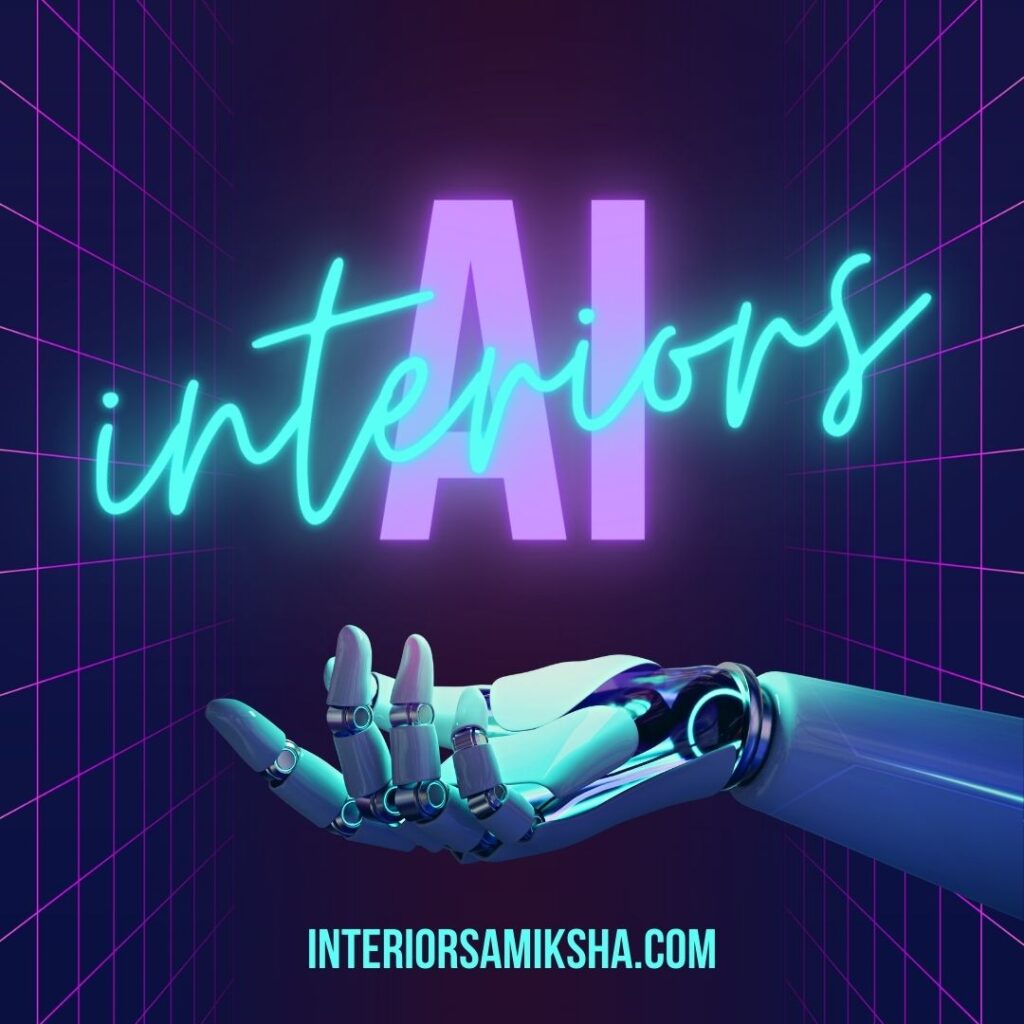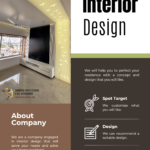AI is taking over a lot of jobs. It’s killing the scope of human beings working in a lot of industries, especially in the IT sector. However, it cannot take over the job of any creative person. There’s really no AI interior designer.
As an interior designer, I have been asked these questions by a lot of people recently-
- “Is there any AI app that I can use to design my house?”
- “Can I do it myself with the help of an AI app/software?”
- “Why should I spend so much money on an interior designer when there’s AI now?”
While these questions tick me off a bit, I keep my cool and just make peace with the fact that people, even today are so unaware of what exactly interior designers do.
It’s a failure of the entire design community if we have not been able to educate people about our jobs. And with AI taking over, it’s only becoming more disheartening and discouraging.
Nonetheless, with such questions taking a rise in my DMs, I want to address this once and for all.
AI CAN NEVER REPLACE AN INTERIOR DESIGNER.
Let’s understand why.
1. Machines Cannot Be “Creative”
Why AI will replace programmers but never designers? Let me explain.
Human beings are creatures of consciousness and consciousness does not correspond with “programming”. I may not fully understand the job of a programmer. But I feel that human beings must be in deeds, in actions, that involve “creativity”.
AI can never be creative. No machine can ever “understand”. Machines can comprehend, translate, and interpret; but never understand.
Understanding is something that only human consciousness is capable of.
Interior designing is not a mechanical, repeated, or coded work.
Creativity comes from consciousness.
Interior designers do what machines can never do.
2. AI Has Limitations
While AI can certainly help by automating a lot of design processes, it cannot completely replace human designers. As I already said, AI cannot do the creative or conceptual part of the job. AI lacks the “human touch” that is essential to design work.
We, designers, are trained to use our intuition, creativity, and most importantly, our empathy to design and make proposals that make aesthetical, functional and budgetary sense. AI cannot replicate this.
Only a human designer can interpret a client’s preferences and tastes and transform their spaces with a personalized and unique design that reflects their lifestyle.
3. Coordination and Collaboration Difficulties
Interior designing and renovation works require a certain level of commitment, communication and collaboration that AI is incapable of replicating.
Not only this, a lot of changes and modifications are made on the go during the execution phases of the projects which are left unaccounted for or undocumented. And an AI cannot work without commands or going through a certain process.
Can you imagine a house designed by an AI that’s collaborating with an AI interior designer or with an AI project manager? This doesn’t even sound far-fetched, but impossible. Design feasibility is a dynamic process which involves on-the-go human interactions, and understanding of client budgets and building codes.
Human designers can build relationships with clients and communicate empathically and effectively, even when there’s a drastic change in the client’s budget in the middle of the project. An AI would never be able to process such changes.
Only a human designer can create a successful, positive design experience!
4. Incapable of Design Customization
The more you try to systemize design, the more you lose hold of the customization aspect.
I have first-hand experienced this in a way. AI may work well in the modular furniture industry. I have worked in a few myself a few years back. I felt like a machine and chose to move out and start my own interior design practice.
Modular designing should not be called “interior designing”. It’s just a combination of modular units together and fit in available space. Any machine can do that with fed material info and methods. You don’t need a “designer” to do that and waste their potential.
Modular interior companies have a set of core materials and finishes (which are also very limited) that they use for the construction of furniture. There’s usually no option to experiment or try something new or unique.
My experience in the past modular companies that I have worked in has been very mixed. Often clients feel trapped due to a lack of options in materials, designs and finishes. Designers also feel helpless in those cases and end up getting bad personal feedback from the clients.
So, let machines take that over. Let them design and receive feedback. Let’s see how that works out in the interior design industry.
I recently designed this wardrobe for a client.
Look at how many different laminates I have used in one single wardrobe. That too in a very abstract, asymmetrical pattern. This wouldn’t have been possible if it was to be done by a machine.
Often modular industries have very simple and straight-line designs for their furniture.
A designer should not have to limit themselves and work according to machines. Make the machines work according to you if you can. If not, go the traditional way.
Summing Up
There’s no denying that AI can help in providing perspective and speeding up the research process between the clients and the designers. However, let’s agree that AI cannot possibly replace a human designer because only a human interior designer can make an emotional connection with their clients.
Interior designing and execution is an intimate and personal experience, that only a human can build upon to establish understanding and trust. Only then they can reflect the personal and emotional preferences of the clients.
The best AI can do is provide valuable insights and assistance to the interior designs in the design process.
The best approach for the clients (who’ve been asking me questions about how they can make me jobless and use AI to design their homes) would be to embrace AI technology as only a tool to enhance the design experience. Don’t think of removing human designers from the whole interior design process but take this as a hybrid approach.





